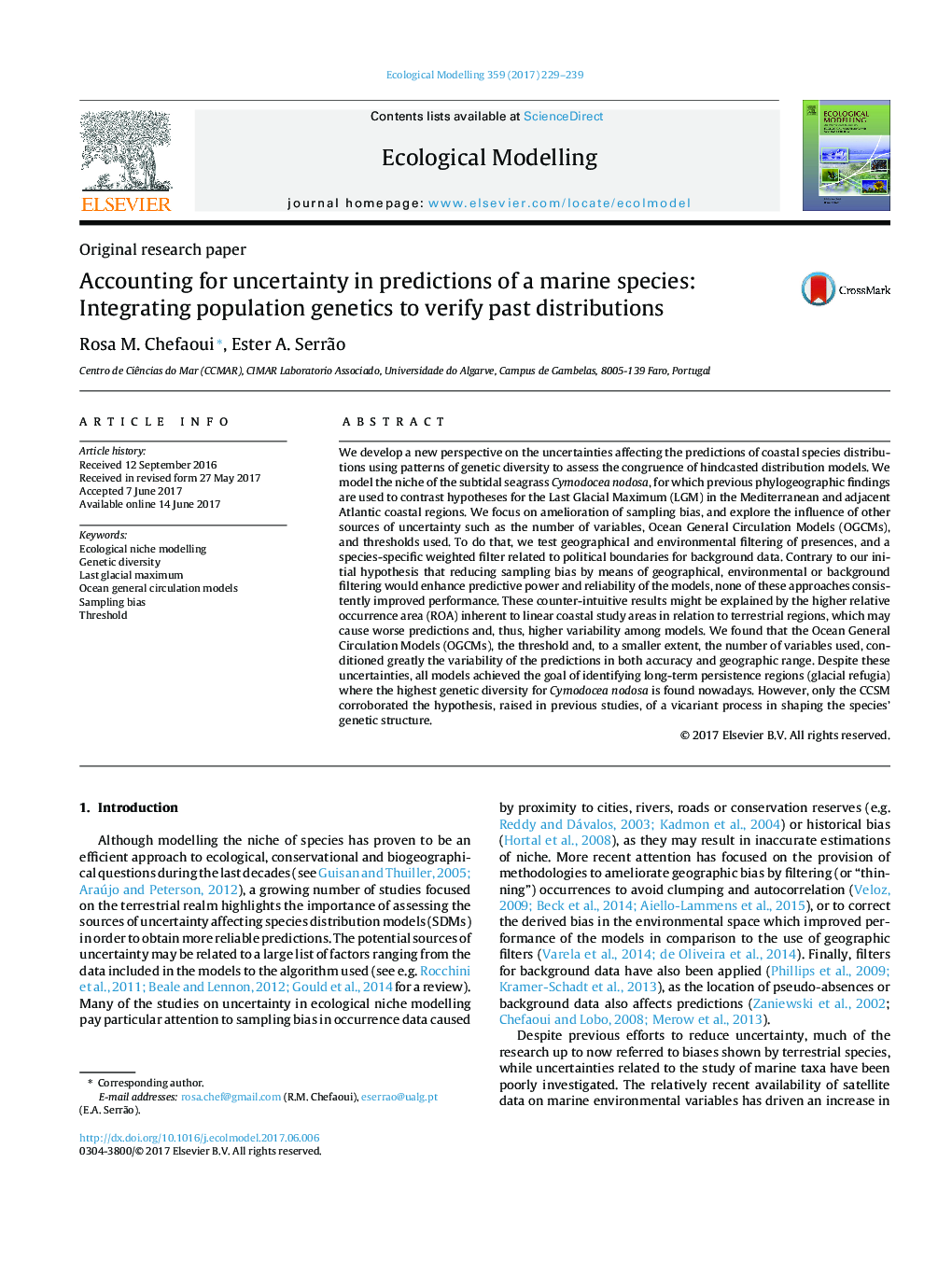| کد مقاله | کد نشریه | سال انتشار | مقاله انگلیسی | نسخه تمام متن |
|---|---|---|---|---|
| 5742134 | 1617388 | 2017 | 11 صفحه PDF | دانلود رایگان |
- Filters used in species data did not ameliorate sampling bias of a seagrass.
- Reducing sampling bias in coastal studies was not as effective as in terrestrial.
- The Ocean General Circulation Models and thresholds conditioned the models.
- All models identified as glacial refugia regions with the highest genetic diversity.
We develop a new perspective on the uncertainties affecting the predictions of coastal species distributions using patterns of genetic diversity to assess the congruence of hindcasted distribution models. We model the niche of the subtidal seagrass Cymodocea nodosa, for which previous phylogeographic findings are used to contrast hypotheses for the Last Glacial Maximum (LGM) in the Mediterranean and adjacent Atlantic coastal regions. We focus on amelioration of sampling bias, and explore the influence of other sources of uncertainty such as the number of variables, Ocean General Circulation Models (OGCMs), and thresholds used. To do that, we test geographical and environmental filtering of presences, and a species-specific weighted filter related to political boundaries for background data. Contrary to our initial hypothesis that reducing sampling bias by means of geographical, environmental or background filtering would enhance predictive power and reliability of the models, none of these approaches consistently improved performance. These counter-intuitive results might be explained by the higher relative occurrence area (ROA) inherent to linear coastal study areas in relation to terrestrial regions, which may cause worse predictions and, thus, higher variability among models. We found that the Ocean General Circulation Models (OGCMs), the threshold and, to a smaller extent, the number of variables used, conditioned greatly the variability of the predictions in both accuracy and geographic range. Despite these uncertainties, all models achieved the goal of identifying long-term persistence regions (glacial refugia) where the highest genetic diversity for Cymodocea nodosa is found nowadays. However, only the CCSM corroborated the hypothesis, raised in previous studies, of a vicariant process in shaping the species' genetic structure.
Journal: Ecological Modelling - Volume 359, 10 September 2017, Pages 229-239
